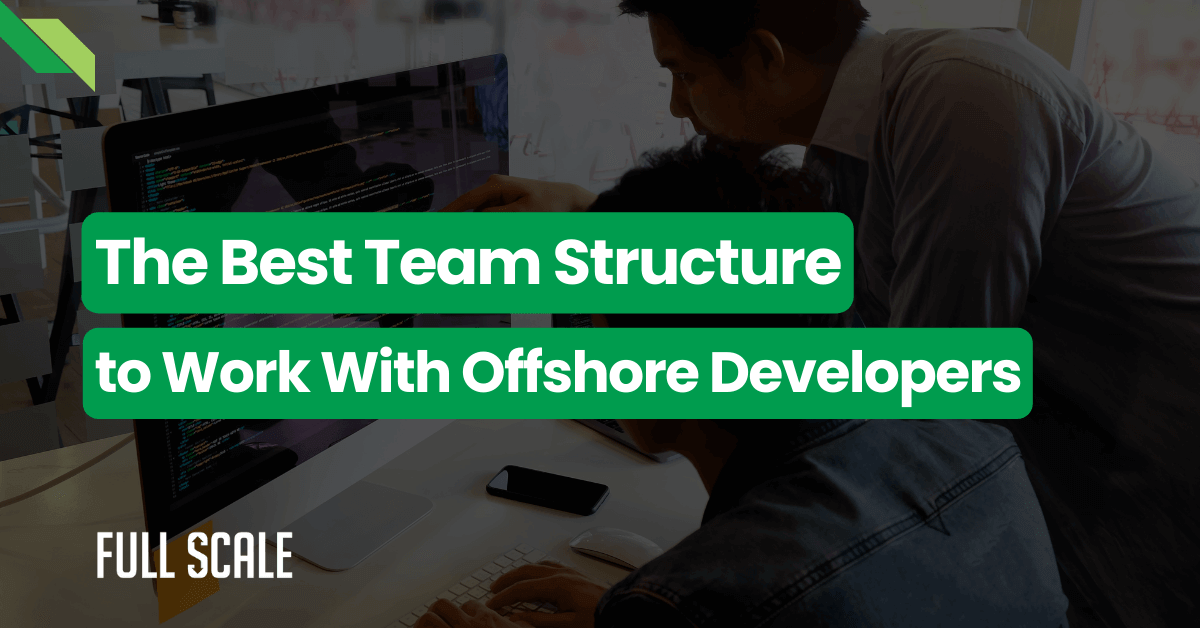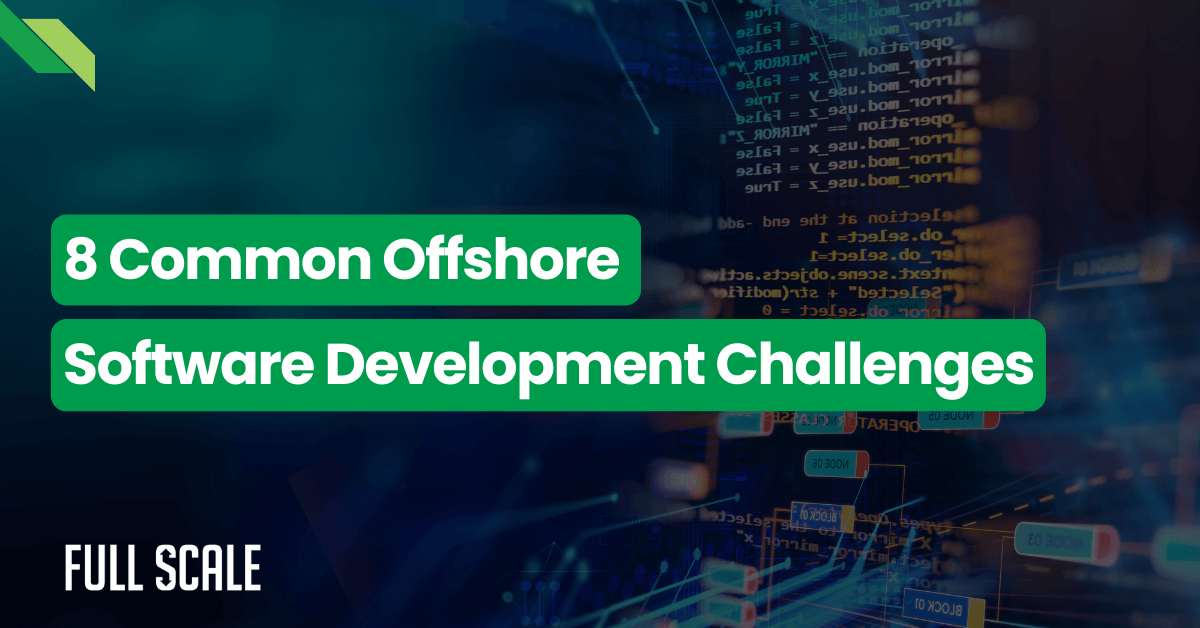Last Updated on 2025-04-09
Microservices ROI continues to be a critical consideration for organizations planning architectural transformations. According to a 2024 DevOps Pulse survey by Logz.io, companies that successfully implement microservices report up to 53% faster time-to-market for new features and a 41% increase in overall development productivity. These striking statistics highlight why many organizations consider transitioning from monolithic architectures.
A 2025 O’Reilly Microservices Adoption Survey reveals that 87% of organizations now implement some form of microservices, yet 62% report initial ROI challenges during the first 12 months of implementation. This underscores why thorough microservices ROI analysis remains essential for technical leaders.
Microservices architecture offers compelling benefits but comes with significant implementation costs and operational complexities. A 2024 Gartner report indicates that organizations that conduct proper microservices ROI analysis before migration are 3.2 times more likely to achieve positive returns within the first 18 months.
This comprehensive guide walks CTOs, VPs of Engineering, and senior technical managers through the critical financial and operational considerations of microservices adoption.
Understanding the True Cost of Microservices
The financial impact of microservices extends far beyond initial development costs. Technical leaders must account for organizational, operational, and hidden costs throughout the implementation journey.
Initial Implementation Costs
Transitioning to microservices requires significant upfront investment across multiple dimensions. Teams need restructuring to align with service boundaries and operational requirements.
The initial costs typically include the following key components that impact microservices ROI:
| Cost Category | Description | Typical Range |
| Team Restructuring | Reorganizing development teams around services | $50,000-$200,000 |
| New Infrastructure | Containerization, orchestration, and CI/CD pipelines | $30,000-$150,000 |
| Training | Developer and operations training on new technologies | $20,000-$80,000 |
| Migration Engineering | Moving functionality from monolith to services | $100,000-$500,000+ |
This table represents the typical investment ranges organizations encounter during microservices adoption. Costs vary based on company size and existing technical maturity.
These figures represent the investment required for a mid-sized company with 3-5 development teams. Infrastructure costs vary based on existing tooling and cloud implementation maturity.
Ongoing Operational Costs
Microservices introduce new operational complexities that translate into ongoing expenses. The distributed nature of the architecture requires sophisticated monitoring and management.
Key operational costs that affect ongoing microservices ROI include:
| Operational Aspect | Monolithic Cost | Microservices Cost | Difference |
| Infrastructure | $X | $X + 20-40% | +20-40% |
| Monitoring | $Y | $Y + 50-100% | +50-100% |
| DevOps Support | 1-2 FTEs | 2-4 FTEs | +1-2 FTEs |
| Performance Testing | Simple | Complex | +30-50% effort |
This comparison highlights the operational cost differences between architectures. These ongoing expenses significantly impact long-term microservices ROI calculations.
Organizations often underestimate these ongoing operational expenses. The distributed nature of microservices demands more sophisticated observability tools and practices.
Hidden Costs That Teams Often Overlook
Several indirect costs significantly impact the total investment but frequently remain unaccounted for in initial planning. These hidden costs can derail ROI projections if not properly considered.
The most commonly overlooked expenses include:
- Service Boundary Definition: Extensive analysis to properly define service boundaries costs an average of 1-3 months of architect time per major domain.
- Inter-service Communication: Network latency, protocol overhead, and complexity can reduce performance by 10-30% compared to in-process communication.
- Data Consistency: Implementing eventual consistency patterns across services typically adds 20-40% to development time for transactions spanning multiple services.
- Deployment Complexity: Teams report spending 30-50% more time on deployment automation and orchestration compared to monolithic deployments.
Technical leaders must factor these hidden costs into ROI calculations to avoid unpleasant surprises. Successful implementations budget for these expenses from the start.
Quantifiable Benefits of Microservices Architecture
Despite the costs, microservices offer substantial benefits that can deliver positive ROI over time. These advantages materialize in three primary areas: scalability, development velocity, and technical debt reduction.
Scalability Advantages
Microservices enable precise, targeted scaling of individual components rather than scaling entire applications. This granular approach yields significant infrastructure savings.
Scalability benefits that contribute to positive microservices ROI include:
| Scalability Factor | Monolithic Approach | Microservices Approach | Potential Savings |
| Resource Allocation | Scale entire application | Scale only needed services | 30-50% |
| Peak Handling | Overprovisioning | Dynamic scaling | 20-40% |
| Specialized Resources | Limited options | Service-specific optimization | 15-30% |
This table demonstrates the potential infrastructure savings from microservices’ targeted scaling capabilities. These efficiency gains often drive significant positive ROI over time.
One Full Scale client in e-commerce reduced infrastructure costs by 42% after migrating to microservices. Their checkout service now scales independently during sales events while less critical services maintain baseline capacity.
Development Velocity Improvements
Microservices enable teams to work in parallel with reduced coordination overhead. This independence accelerates feature delivery and reduces time-to-market for new capabilities.
Development improvements that accelerate microservices ROI typically include:
| Velocity Metric | Before Microservices | After Microservices | Improvement |
| Release Frequency | Monthly/Quarterly | Weekly/Daily | 4x-30x |
| Feature Delivery Time | 4-12 weeks | 1-3 weeks | 75% reduction |
| QA Cycle Time | 1-2 weeks | 1-3 days | 70-85% reduction |
| Build Times | 30-60 minutes | 2-5 minutes | 90% reduction |
This comparison illustrates typical development velocity improvements after microservices adoption. These metrics directly translate to business value in competitive markets.
These improvements compound over time. Teams deliver more features with fewer delays and dependencies, creating a competitive advantage through faster market response.
Technical Debt Reduction
Microservices architecture naturally contains technical debt within service boundaries. This containment prevents the exponential growth of complexity that often plagues monolithic systems.
Technical debt benefits include:
- Isolated Refactoring: Teams can modernize individual services without system-wide impact, reducing refactoring risk by 60-80%.
- Technology Diversity: Organizations can adopt new technologies for specific services, avoiding costly system-wide migrations.
- Incremental Modernization: Legacy components can be replaced gradually, spreading the investment over time rather than requiring “big bang” rewrites.
- Clearer Ownership: Service-aligned teams have clear responsibility for code quality, reducing orphaned or neglected components by 50-70%.
Technical debt compounds at rates of 20-50% annually in monolithic systems. Microservices can reduce this accumulation rate to 5-15% through better isolation and ownership patterns.
Calculating Microservices ROI
Determining the financial return on microservices investments requires structured analysis. Several frameworks help technical leaders quantify costs and benefits over time.
Framework for Assessment
The microservices ROI framework consists of three primary calculations: initial investment, ongoing costs, and time-to-breakeven analysis.
A comprehensive assessment includes:
- Initial Investment (I): Sum of implementation costs, including restructuring, training, tooling, and migration engineering.
- Monthly Operating Cost Delta (ΔO): Difference between microservices and monolithic monthly operational costs.
- Monthly Benefit Value (B): Monetary value of increased velocity, reduced downtime, and scalability benefits.
- Time to Breakeven (T): T = I ÷ (B – ΔO)
This calculation reveals the number of months until the microservices investment generates positive returns. Most organizations target breakeven points between 12 and 24 months.
Key Performance Indicators to Track
Measuring microservices ROI requires tracking specific performance indicators. These metrics provide ongoing validation of projected benefits.
Essential KPIs for measuring microservices ROI include:
| KPI Category | Key Metrics | Target Improvement |
| Development | Deployment frequency, Lead time for changes | 3x-10x increase |
| Reliability | MTTR, Change failure rate | 50-80% reduction |
| Efficiency | Infrastructure cost per transaction | 20-40% reduction |
| Business | Time-to-market for new features | 30-60% reduction |
This framework provides measurable indicators to track microservices ROI over time. Regular monitoring helps organizations validate their investment and identify optimization opportunities.
Organizations should establish baseline measurements before migration. Regular tracking helps identify areas for optimization and validates ROI projections.
ROI Calculator Tool Introduction
The following simplified calculator helps estimate basic microservices ROI. For a comprehensive analysis, here’s Full Scale Microservices ROI Calculator.
| Input Factor | Formula Element | Your Value |
| Current monthly infrastructure cost | A | $______ |
| Expected infrastructure increase (%) | B | ____% |
| Current development team size (FTEs) | C | ______ |
| Expected velocity improvement (%) | D | ____% |
| Migration cost estimate | E | $______ |
| Operational cost increase (%) | F | ____% |
This calculator template helps organizations estimate their potential microservices ROI. The inputs capture key financial variables that influence the overall investment return.
Estimated ROI = (A × B) + (C × salary × D) – E – (A × F)
This simplified formula provides directional guidance. The full calculator includes additional factors like reduced downtime costs and technical debt accumulation rates.
When Does Microservices Make Financial Sense?
Not every organization benefits equally from microservices. Several factors determine whether the investment yields positive microservices ROI for specific business contexts.
Company Size and Scale Considerations
Organization size and growth trajectory significantly impact microservices ROI. Different scenarios present distinct financial considerations.
Size-based considerations that impact microservices ROI include:
| Company Size | Monolith Viability | Microservices ROI | Recommendation |
| Small Startup (<20 devs) | High | Often Negative | Start with monolith |
| Mid-size (20-100 devs) | Medium | Context-dependent | Selective adoption |
| Enterprise (100+ devs) | Low | Usually Positive | Phased migration |
This comparison helps organizations determine if microservices adoption aligns with their size and structure. Company scale significantly influences potential microservices ROI outcomes.
Growth trajectory also impacts ROI timeline. Companies experiencing 50%+ annual growth often reach positive ROI 30-40% faster than stable organizations due to scaling efficiencies.
Existing Technical Debt Assessment
The current state of application architecture significantly influences microservices ROI. Higher technical debt levels can accelerate positive returns on microservices investments.
Key technical debt indicators include:
- Change Failure Rate: When exceeding 15-20%, microservices isolation typically delivers positive ROI within 12-18 months.
- Release Cycle Length: Organizations requiring more than 2-3 weeks for releases often see faster ROI from microservices.
- Scaling Limitations: Applications hitting fundamental scaling limits typically achieve positive microservices ROI within 6-12 months.
- Maintenance Cost Trend: Systems with maintenance costs growing more than 15% annually benefit most from microservices decomposition.
Technical debt assessment should include both quantitative metrics and qualitative evaluation from senior developers. Their insights often reveal hidden costs that accelerate ROI timelines.
Industry-Specific ROI Factors
Different industries experience unique microservices benefits and challenges. These variations affect microservices ROI calculations and implementation strategies.
Industry-specific considerations that influence microservices ROI include:
| Industry | Primary Benefit | ROI Timeline | Special Considerations |
| E-commerce | Elastic scaling | 12-18 months | Seasonal traffic patterns |
| FinTech | Incremental compliance | 18-24 months | Regulatory requirements |
| SaaS | Development velocity | 9-15 months | Continuous deployment |
| Healthcare | Isolation of PHI data | 24-36 months | Strict compliance needs |
This table outlines how microservices ROI varies across industries. Organizations should calibrate their expectations based on sector-specific factors and common implementation patterns.
Organizations should benchmark against industry peers rather than general averages. Industry-specific reference cases provide more accurate ROI projections.
Real-World Microservices ROI Case Studies
Theoretical ROI calculations provide guidance, but real-world examples demonstrate actual outcomes. These case studies from Full Scale clients illustrate practical ROI scenarios.
E-commerce Platform Transformation
One Full Scale client transformed their e-commerce platform from a monolith to microservices over 18 months. Their journey reveals important ROI lessons.
Before and after metrics demonstrate the actual microservices ROI achieved:
| Metric | Before | After | Change |
| Infrastructure Cost | $45,000/mo | $52,000/mo | +15% |
| Release Frequency | Bi-weekly | 2-3x daily | +95% |
| Peak Season Scaling | 3x baseline cost | 1.8x baseline cost | -40% |
| MTTR | 4.2 hours | 0.8 hours | -81% |
| Development Velocity | 6 features/sprint | 15 features/sprint | +150% |
This case study data reveals the concrete outcomes of a successful e-commerce microservices implementation. The combined benefits resulted in positive ROI despite initial cost increases.
Initial implementation required $850,000 in migration costs. The company reached ROI breakeven at month 14, with accelerating returns thereafter from increased development velocity.
FinTech Company Migration Journey
A financial technology client migrated their transaction processing platform to microservices over 24 months. Their experience highlights both challenges and financial outcomes.
The migration journey that led to positive microservices ROI included:
| Phase | Duration | Cost | Key Challenge | Key Benefit |
| Initial Analysis | 3 months | $120,000 | Service boundary definition | Architecture clarity |
| Core Services Migration | 12 months | $680,000 | Data consistency | Parallel development |
| Legacy Integration | 9 months | $450,000 | API versioning | Incremental release |
This phased implementation timeline shows the investment breakdown across the migration journey. Proper phasing helped manage costs while accelerating benefit realization.
Current ROI status shows annual savings of $1.2M from reduced infrastructure costs and increased development productivity. The company reached breakeven at month 22, with compliance benefits accelerating approval for new markets.
When Microservices Didn’t Pay Off: A Cautionary Tale
Not all microservices migrations succeed. Another client attempted microservices adoption but abandoned the effort after 8 months due to several critical issues.
Warning signs included:
- Premature Adoption: The organization had fewer than 15 developers but attempted full microservices implementation.
- Insufficient DevOps Maturity: Lack of automation and monitoring capabilities created operational chaos.
- Inappropriate Service Boundaries: Services were divided by technical layer rather than business capability, creating excessive coupling.
- Underestimated Training Needs: Developers struggled with distributed systems concepts, reducing productivity by 30%.
The company spent $380,000 before reverting to a modular monolith approach. Their experience demonstrates that company size, technical maturity, and proper implementation strategy significantly impact ROI outcomes.
Start Your Microservices Journey with Full Scale
Microservices architecture offers compelling benefits for many organizations but requires careful financial analysis. The ROI equation depends on company size, growth trajectory, existing technical debt, and industry-specific factors.
Technical leaders should:
- Assess true implementation costs, including hidden factors like service boundary definition and data consistency management.
- Quantify benefits across scalability, development velocity, and technical debt dimensions.
- Calculate expected ROI using comprehensive frameworks that account for both direct and indirect costs.
- Consider company-specific factors that influence microservices viability.
Organizations with 50+ developers, high growth rates, or significant technical debt typically achieve positive microservices ROI within 12-24 months. Smaller or more stable organizations may benefit from incremental adoption or alternative architectural approaches.
Streamline Your Microservices Journey with Full Scale
Implementing microservices architecture requires specialized expertise and careful planning to achieve positive ROI. Full Scale helps organizations navigate this complex transition with confidence.
At Full Scale, we specialize in helping businesses build and manage offshore development teams equipped with the skills to implement microservices effectively.
Why Full Scale?
- Microservices Expertise: Our developers have extensive experience with containerization, service design, and distributed systems.
- Seamless Integration: Our teams integrate effortlessly with your existing processes, ensuring smooth collaboration during migration.
- Tailored Migration Strategies: We design implementation approaches that are aligned with your specific business context and ROI requirements.
- Scalable Resources: Expand your technical capacity precisely when needed throughout the migration journey.
Our Services:
- Custom Software Development Services: End-to-end solutions tailored to your unique microservices architecture needs
- Offshore Development Services: Cost-effective distributed teams that specialize in modern architecture patterns
- Staff Augmentation Services: Targeted technical expertise to complement your existing development resources
- App Development Services: Modern application design and implementation based on microservices best practices
Don’t let microservices complexity derail your modernization efforts. Schedule a free consultation today to learn how Full Scale can help your organization achieve positive microservices ROI.
Transform Your Architecture with Full Scale
FAQs: Microservices ROI
How long does it typically take to achieve positive ROI with microservices?
Most organizations reach positive microservices ROI within 12-24 months after full implementation. Enterprise-scale companies with high growth rates often see faster returns, sometimes in as little as 9-12 months. The timeline depends on your organization’s size, technical maturity, and growth trajectory. Companies experiencing over 40% annual growth typically reach positive ROI 30-40% faster than stable organizations.
What are the biggest factors that influence microservices ROI?
The most significant factors affecting microservices ROI include organizational size, existing technical debt, growth rate, and industry-specific requirements. Technical maturity, especially in DevOps practices, dramatically impacts implementation costs. Companies with mature CI/CD pipelines, containerization experience, and API governance typically achieve 30-45% lower implementation costs than those building these capabilities from scratch.
Is microservices architecture worth investing in for smaller companies?
Smaller organizations (under 20 developers) often experience negative microservices ROI in the short term due to higher relative implementation costs and operational overhead. These companies generally benefit from starting with a well-designed monolith and adopting microservices patterns incrementally as they scale. Mid-size companies should consider selective adoption focused on high-value components rather than full-scale migration.
How do we accurately measure microservices ROI in our organization?
Accurate microservices ROI measurement requires establishing baseline metrics before migration begins. Track deployment frequency, lead time for changes, MTTR, infrastructure costs per transaction, and development team velocity. Quantify improvements in these metrics and translate them to business value through increased revenue opportunities, improved customer experience, and operational savings. Organizations should conduct quarterly ROI assessments during the first two years post-implementation.
What hidden costs should we budget for in our microservices implementation?
Many organizations overlook critical cost factors, including service boundary analysis (3-6 months of architect time), data consistency management (20-40% development overhead), network latency mitigation (5-15% performance impact), cross-service testing complexity (30-50% additional QA effort), and observability investments (15-25% of total infrastructure costs). Successful implementations typically budget an additional 40% beyond direct implementation costs to account for these factors.
How does microservices architecture compare to serverless for ROI?
Microservices typically offer better ROI for steady, predictable workloads with complex business logic. Serverless provides superior returns for event-driven, variable-demand scenarios with simple processing needs. Many organizations achieve optimal ROI through hybrid approaches where core business services use microservices while peripheral, event-driven functionalities leverage serverless. The break-even point for serverless typically occurs at approximately 15-20% resource utilization; below this threshold, serverless offers better ROI.
What organizational changes maximize microservices ROI?
Restructuring teams around business capabilities rather than technical layers can increase development velocity by 30-50%. Implementing DevOps practices reduces deployment failures by 60-80%. Establishing clear service ownership reduces technical debt accumulation by 40-60%. Creating a platform team to manage shared infrastructure and standardize deployment processes typically reduces operational overhead by 25-35%. These organizational changes often deliver ROI faster than the technical migration itself.

Matt Watson is a serial tech entrepreneur who has started four companies and had a nine-figure exit. He was the founder and CTO of VinSolutions, the #1 CRM software used in today’s automotive industry. He has over twenty years of experience working as a tech CTO and building cutting-edge SaaS solutions.
As the CEO of Full Scale, he has helped over 100 tech companies build their software services and development teams. Full Scale specializes in helping tech companies grow by augmenting their in-house teams with software development talent from the Philippines.
Matt hosts Startup Hustle, a top podcast about entrepreneurship with over 6 million downloads. He has a wealth of knowledge about startups and business from his personal experience and from interviewing hundreds of other entrepreneurs.




